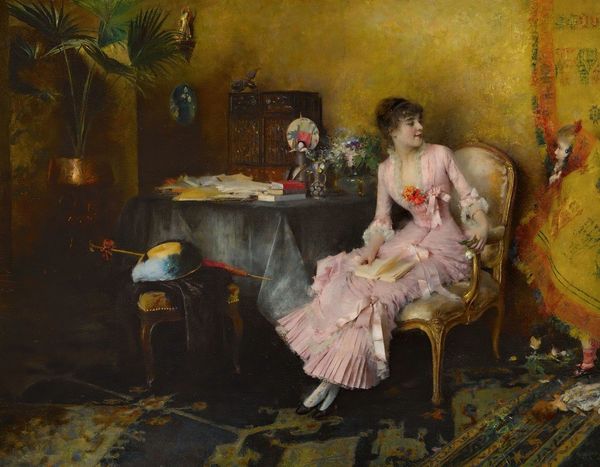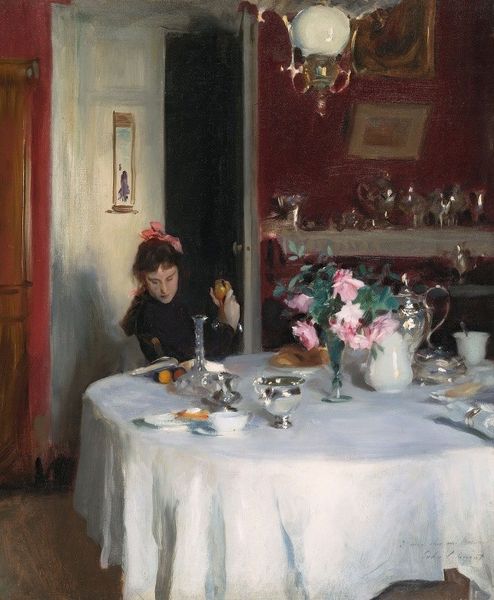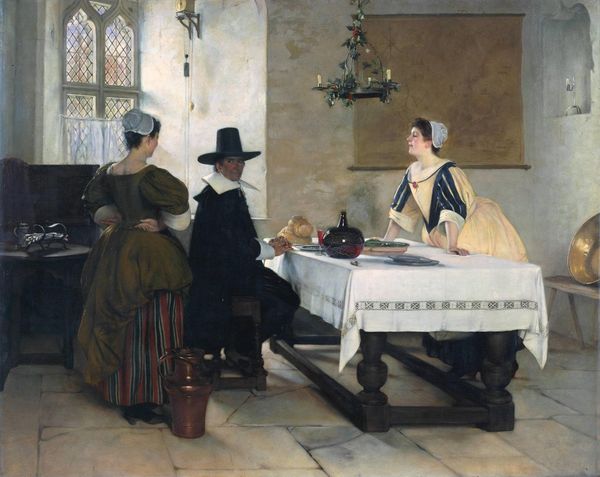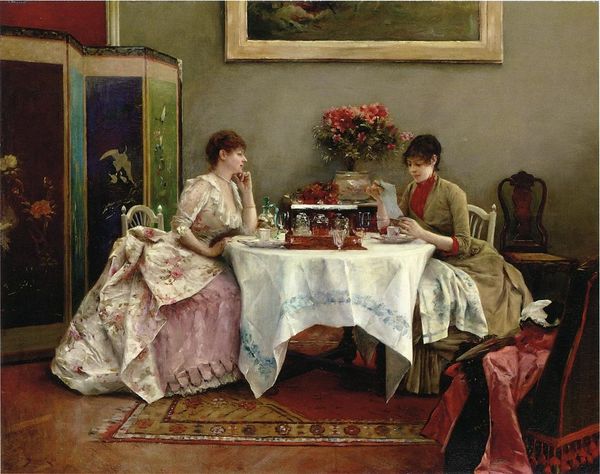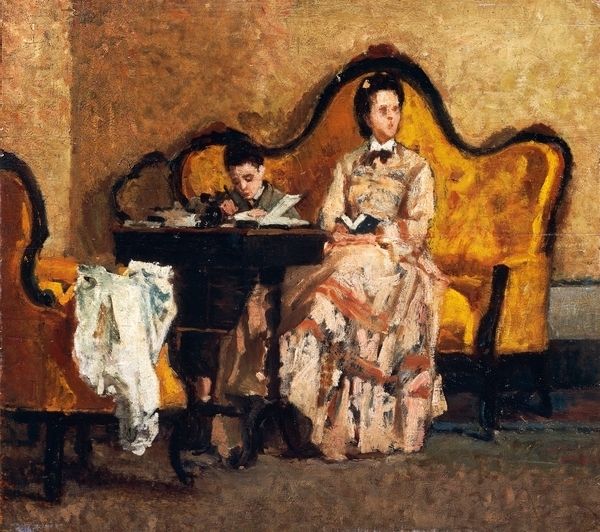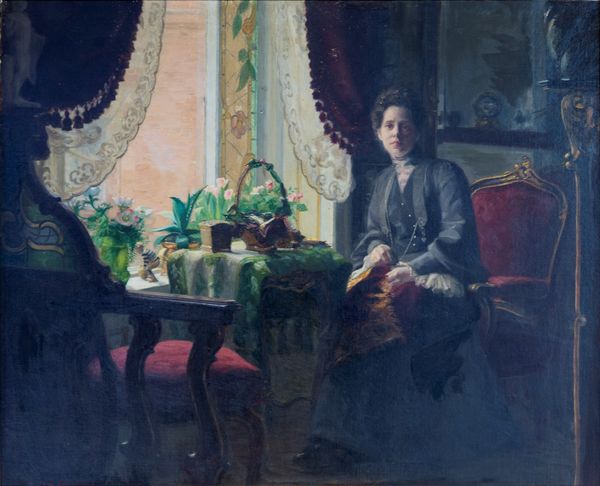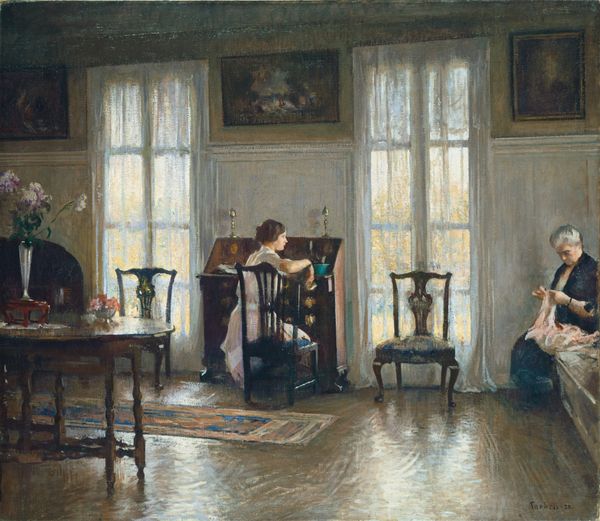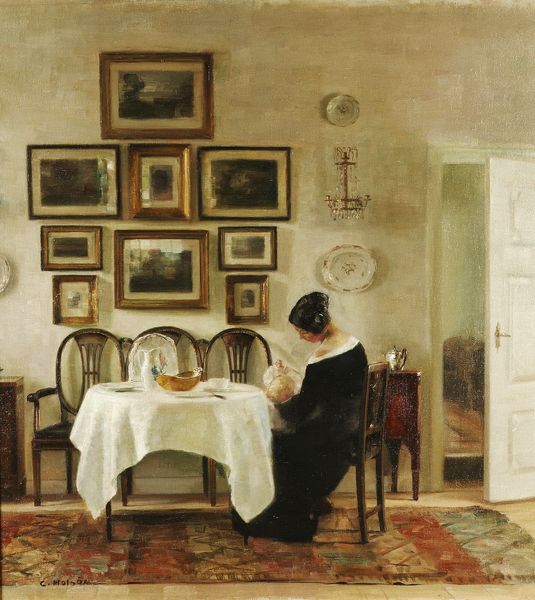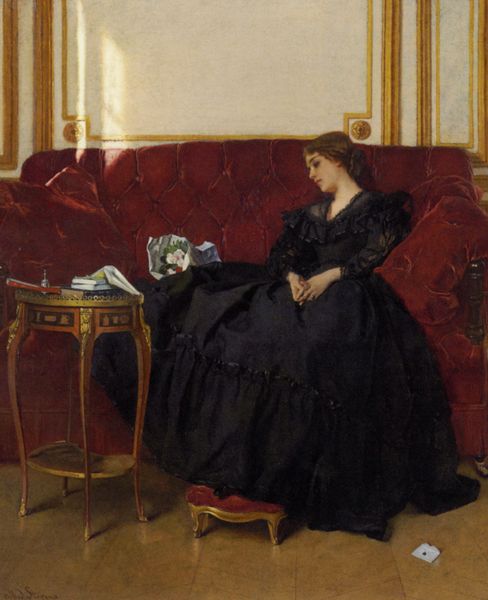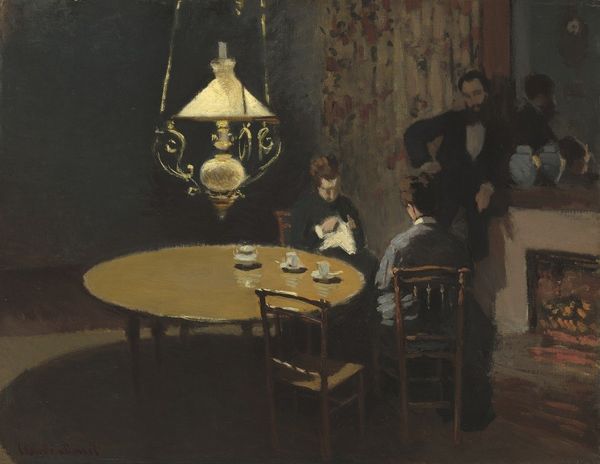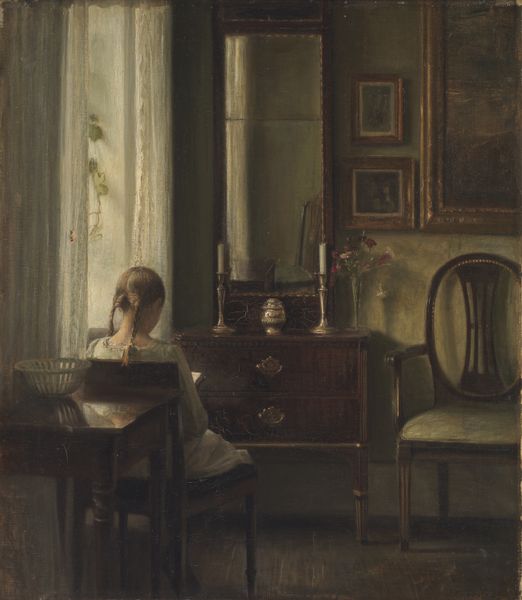
#
unusual home photography
#
building site documentary shot
#
street view
#
oil painting
#
underpainting
#
showhome propping
#
painting painterly
#
person holding a poster
#
watercolor
#
historical building
Copyright: Public domain
Editor: Francis Davis Millet's "The Widow," painted in 1891, presents a subdued interior scene. The somber palette and the widow's solitary figure really set a melancholic mood, don't you think? I'm struck by the juxtaposition of the ornate setting and her apparent grief. How do you interpret this work? Curator: It's fascinating how Millet uses the visual language of domesticity to convey loss and memory. Notice the reflective surfaces: the mirror, the silver. These objects, often associated with status and stability, become potent symbols of absence. The child at the table disrupts the widow’s grief with innocence, perhaps symbolizing the continuation of life amidst sorrow. What emotions do these symbols evoke for you? Editor: That's interesting. The silver does feel heavy, almost like a burden of the past. I hadn't considered the child's presence as a symbol of hope, more like a poignant reminder of what's been lost. Does the style contribute to this effect? Curator: Absolutely. Millet's use of realism anchors the scene in a recognizable world, enhancing its emotional impact. Think about the black dress—a visual signifier of mourning, connecting the widow to a history of grief rituals. The dress acts as a sign, telling us about loss as well as acting as a shroud of sadness. How does the artist create emotion? Editor: I see how the carefully arranged objects contribute to the narrative and deepen the emotional impact. It’s a much more layered piece than I initially realized. Curator: Precisely. Visual culture is filled with inherited meaning. It’s about how artists select and arrange visual symbols to unlock a cultural memory or construct an emotional narrative that persists over time. Editor: I hadn't considered how loaded such an everyday scene could be. Thank you for enlightening me on the depths of symbolism embedded in "The Widow."
Comments
No comments
Be the first to comment and join the conversation on the ultimate creative platform.

